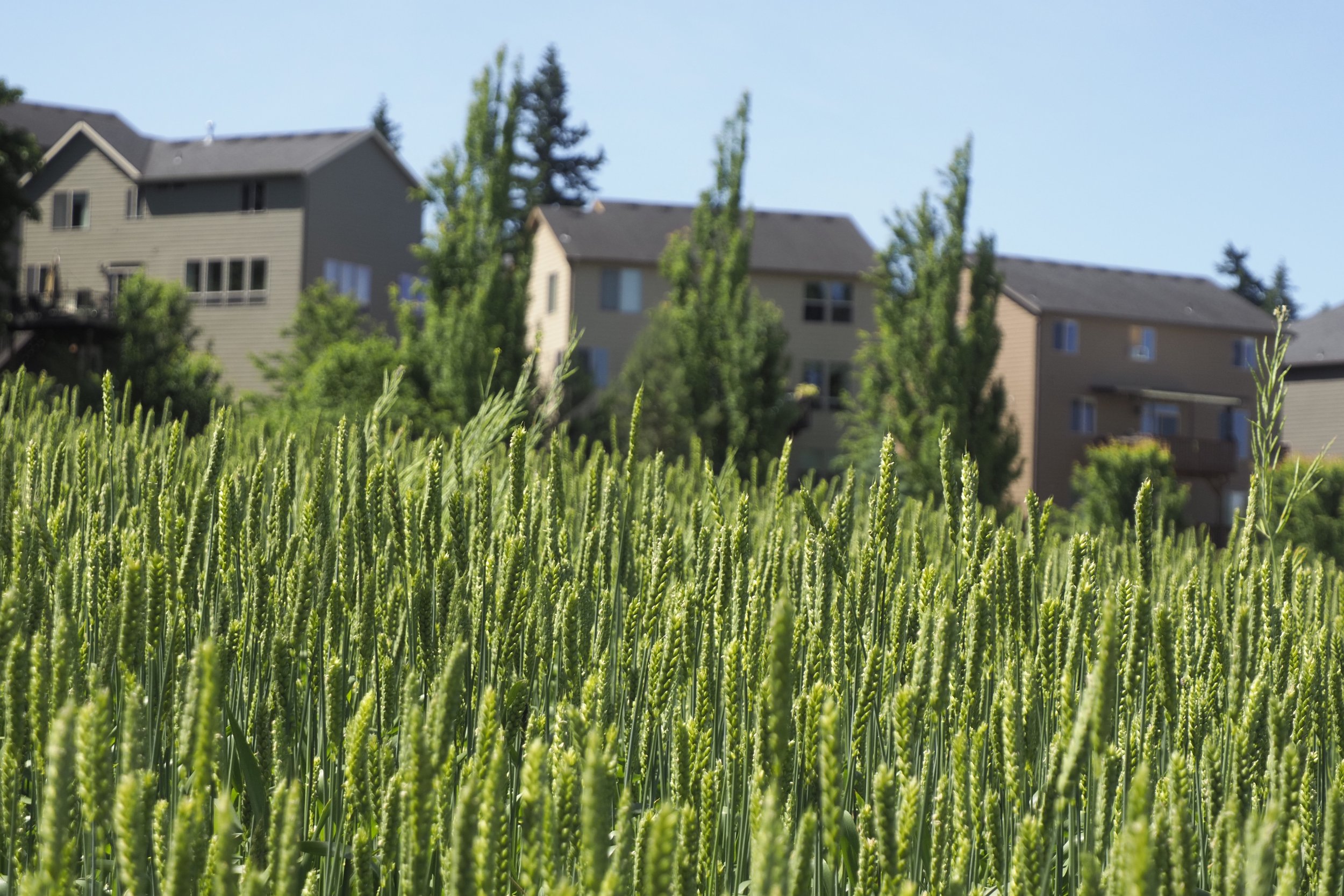
Producing in Tight Quarters
Producing in tight quarters is an ecological and social challenge for peri-urban farmers.
Small land base strategies are critical to adopt in areas where land is being development into non-agricultural landscapes. As the urban encroaches on the rural, there is a need to adapt to less physical space to produce, less access to on-farm materials, but also new and unique markets.
Leveraging on-farm assets through repurposing is one land base strategy. Rural areas are typically where farmers can access necessary materials and services needed to produce food and bring it to market. For example, often time farm machinery shops are located within rural areas and are not easily accessible to peri-urban farmers. Leveraging what is already on the farm, and any resources surrounding the farm, will be necessary.
High value per acre crops are another land base strategy to consider. Urban and suburban markets open doors for peri-urban farmers. Peri-urban farmers must consider the price per acre of their production to determine if they have the space to scale low value per acres crops to make a profit. Peri-urban farmers have the unique opportunity to produce directly for high value per acre crop markets.
Value-adding is another unique market opportunity and land based strategy peri-urban farmers can utilize. Farmers can add value to what they produce by individually, or in-collaboration with others, turning what would otherwise be a low value market crop into a higher valued item such as jam, jelly, pickles, salsa, flour, etc., and/or they may add value to their farm by evolving their business model to include social events and activities on-farm. The production scale of a peri-urban farmer is often not large enough to profit from commodity market crop production alone, but the proximity to urban markets and populations provides many opportunities outside of this market.

Small Land Base Strategy Resources
-
Article 2
-
Article 3

Building Community Relationships
Community/neighbor relations are key to a viable peri-urban farm business. Operating so close to a non-farm community requires extra attention to building relationships with neighbors so that conflicts due to misunderstandings do not arise. It is important for peri-urban farmers to establish:
Community agreements for residential sales adjacent to farms to avoid disagreement in how community space is used and to ensure the feeling of safety and equity among all neighbors. This means farmers should consider 1) Catering business to values of community, 2) Periodic neighborhood open-houses, and 3) Periodic community-centered events.
Forthright clear communication of expectations and protocols for conflicts should be established early with the surrounding community.
Finding ways to make the surrounding community feel like they are a part of the business and that the busines is a part of the community creates value in the farms presence. Some ways to create deeper connections between the farm and the neighborhood are to: permit recreational access to farm green space, provide space for community garden boxes, offer farm education session, allow community involvement in harvest, or create programs like “Adopt-a-Tree” as a way for neighbors to feel invested in your farms success.
Farming on the Urban Edge
Docuseries Episode 4: Farming in Tight Quarters
Producing on a Limited Land Base & Near Residential Communities
